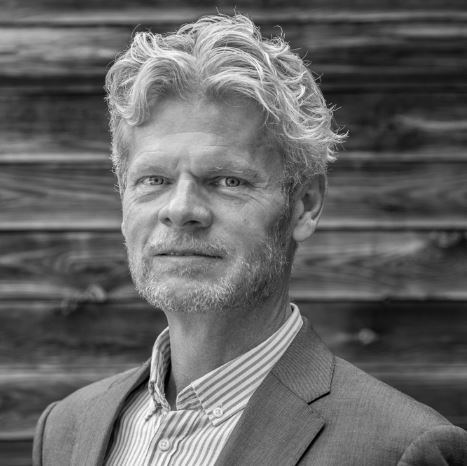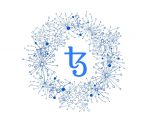 After running one of the first successful ICOs in Denmark, ARYZE is currently conducting an STO (Security Token Offering). In this interview with their CFO, Morten Nielsen, Coinisseur delves into various possibilities of fundraising for crypto companies. We look at Security Token Offerings (STOs), Initial Exchange Offerings (IEOs), and, of course, Initial Coin Offerings (ICOs).
After running one of the first successful ICOs in Denmark, ARYZE is currently conducting an STO (Security Token Offering). In this interview with their CFO, Morten Nielsen, Coinisseur delves into various possibilities of fundraising for crypto companies. We look at Security Token Offerings (STOs), Initial Exchange Offerings (IEOs), and, of course, Initial Coin Offerings (ICOs).
Here is a short recap of each:
Initial Coin Offering (ICO) – ICO is an unregulated way of selling tokens directly to early backers of the project. It’s important to remember that only utility tokens (used as a medium of exchange or “gas” on a platform) can be sold this way. The ICO craze of 2017 resulted in various crypto companies being fined by financial authorities for selling an investment and a multitude of scams, which prompted calls for more regulation in this area. To learn more about ICOs, and how do they differ from an IPO, read this article.
Security Token Offering (STO) – STOs are similar to ICOs, but the main difference lies in what is offered and how. As the name suggests, STOs sell securities. And most importantly, they are regulated. Companies must abide by certain rules and regulations, and investors enjoy more protections. Because of higher requirements, STOs are more expensive to run than ICOs.
Initial Exchange Offering (IEO) – IEOs are the latest to join the crypto fundraising family. Instead of a company selling directly to investors, the tokens are offered via an exchange. The advantages include an ensured listing, access to the exchange’s userbase, and token validation (especially valuable for new crypto companies). The exchange also overtakes the KYC/AML processes. On the other hand, it could be quite expensive to conduct.
| At eToro you can trade 49 currency pairs, including several cryptocurrencies. Join eToro |
Coinisseur: I’d like to start with something you said in our previous interview, that STOs are rebranded ICOs. Do you still believe that?
Morten: To a large extent, yes. It’s all about looking at it from a regulatory perspective. If somebody from a regulatory side, SEC in the US or FSA in Denmark, considers a token sale an investment then it will be treated as a security offering.
The token sales, ICOs which are a pure utility (have pure utility functions in ecosystems like paying for gas) and are not bought for profit are pretty rare. And even when you use services on the blockchain, generally speaking, most of the people who bought these kinds of tokens did it for profit. Some will buy them for pure utility reason, for future use on the blockchain, but others will buy them for profit.
It’s kind of outside the control of the issuing party, whether people will start to speculate on the value of your token. However, if you have indicated certain expectations regarding a return on your token over time in your whitepaper then it’s really hard to get away from being perceived as selling it to the public as an investment, and then it will automatically become a regulated activity.
C: Which offering, ICO, STO, or perhaps an IEO are you considering for ARYZE?
M: We are doing an STO. That is because our RYZE token has utility functions, but we also expect that they would be more valuable in the future. As such, we are selling them on the expectation that they can have utility usage, as well as potentially be profitable in the future. From our perspective doing an STO is down to whether we are considered an investment or not. There are some discussions about whether this is actually an investment per se, given that we’re not selling shares, but we consider this to be equivalent to an equity offering and therefore assume it will be a regulated activity. We will then use exemption rules under the Prospectus regulations in the US and EU so that we don’t have to abide by the full extent of the prospectus laws in the US and the EU. That, in our case, means that we can only fundraise from professional investors, called qualified/professional investors in the EU, or accredited investors in the US.
C: Do you see it as an advantage or an issue? Would you like to sell to the public or are you satisfied with only selling to accredited investors?
M: We are aiming to get quite a few large investors, people who invest between 1 and 5 million dollars. Why? Let’s just assume we would have 25 investors in this round. How do you then secure that there is some degree of liquidity on the exchange from the start of trading? It will be problematic because the tokens are concentrated in very few hands. So, what we’re doing is an IEO on top of the STO.
C: So you will actually do a security token offering but on an exchange?
M: Yes and no – an STO followed by an IEO. Because one of the criteria that you have if you’re doing a security token offering in the pure sense of the word and under the full extent of the prospectus and capital market laws, is that you cannot let your tokens on a non-regulated exchange, and through that follows a possibility of doing adding an IEO for the general public.
If you do an IPO, and you want to approach secondary market trading, it’s an obligation that you let your stocks be traded only on a regulated exchange (due to the capital market laws). It makes sense because then the exchange takes over the KYC/AML of secondary market trading because you move from accredited investors to offering it to the general public. That’s where the difference is. What typically happens in an IPO is that you sell some of the shares to large investors, then you list your equity on an exchange like NASDAQ and a certain part of the whole issuance of stock will then be reserved to the general public. So, intermediaries like banks who are approved as authorized dealers on the exchange and the same time approved to sell securities to the general public will then sell that portion of the stock.
We will be cooperating with a few exchanges around the world where the RYZE token will be listed and then sell in cooperation with the exchange to the general public. We don’t know all the details of how that will work in practice yet, but we know a few exchanges in the US and the EU and we are close to a groundbreaking final structure. And we will not do the IEO until we have sold the minimum required during the current STO which is 26 million dollars.
C: So to make the best of the fundraising possibilities for crypto companies you first had a private ICO, now you’re running an STO for accredited investors, and once that’s successful, you will then conduct an IEO for the public.
M: Exactly. And why do we do that? At the point of the IEO, the interests of the general public should be quite large, as we will have already sold 26 million dollars’ worth of tokens. And we will also be secure in knowing that there would be a distribution among the general public, among crypto investors that do not qualify as accredited investors. And then we will raise interest in the token afterwards because it’s very important to have liquidity in the secondary market. A lot of ICOs didn’t understand that or care about it, and their tokens died.
To create liquidity we do three things:
1) we do the IEO in cooperation with exchanges to sell to the general public, where the price would be market-driven (maybe higher than during the STO, but still much better than in an IPO)
2) we do the STO both in the US and the EU as RYZE 1 and RYZE 2, and they are NOT interchangeable (by doing that there could be a slight difference in price that could also be exploited by arbitrage traders)
3) token burns coupled with demand for the token due to its utility will further create liquidity
Secondary market liquidity and creating awareness about your token are vital for a successful token offering.
C: What will be the structure of the STO?
M: It will most likely be an ERC-777, an extension of ERC-20. The reason for that is that it should be introducing smart contract operators and allows us to separate the two STO tranches for regulation purposes.
C: Will you do the STO in Denmark?
M: No. We can’t really do that. We’re doing the STO in the US out of Delaware, which is pretty standard. And out of Malta for the EU market.
The reason for not doing the STO in Denmark is that the Danish FSA may consider our token an investment and as such is subject to European regulation i.e. prospectus laws of the EU, but Danish taxation authorities may consider our token to have utility functions and add VAT to the token sale. So the opinions of the financial authority and the tax authority may differ. That’s a huge risk for us. Who wants to buy a token that has 25% VAT on it? So we’re not doing the STO to avoid regulation, we’re doing it for tax reasons, which are essential for the success of our STO. Also, there’s a lot of intellectual property in Malta as far as legal issues, taxation issues, and crypto exchange issues are concerned. There’s a lot of knowledge and a lot of skilled people in Malta and operating out of Malta. So, it’s very beneficial for us to do our STO there.
And so far it’s looking good. The interest has been really big. And for good reasons, we have a great product! Additionally, the whole stablecoin scene has been validated by Facebook’s Libra. Cryptocurrencies and stablecoins in particular offer significant improvements as far as financial inclusion is concerned, as well as significant savings where cross-border payments (remittances) are concerned; or indeed domestic ones. Timing is good for us.
C: Let’s move on to the future of ICOs, STOs, and IEOs. How is this area changing, and how will it look like in the future?
M: I still personally believe that although we might have a different name for it in future, STOs are definitely the way to go right now when it comes to regulated activity around securitization of assets. Because that’s essentially what we do, we securitize money (cash). Others are looking at securitizing things like rare cars, rare wine, gold, silver, oil. But basically, we’re talking about tokenized assets for mass distribution, which then become investments. And the game-changer is that the general public has easy access and ability to invest in asset types that are not available today, or difficult and costly to access and expensive to trade. Equity is also set to be tokenized like we do at ARYZE.
C: Given that, as you said, pure utility ICOs are rare, in the future, will we have ICOs?
M: That will depend on the outcome of some trials going on right now. KIK is interesting to follow, the social media app from the US. It has raised about 97 million dollars in an ICO. They claimed they are a utility. We’ll see what the regulators and the courts say about this in the future. Right now, it’s better to be safe than sorry and do an STO.
STO is more expensive. There’s more legal work knowing that you’re doing a somehow regulated activity, but fundamentally it’s only applying what is very logical in terms of selling something to the public which could be perceived as an investment.
In other words, you want to know about your financials, you want to have some projections regarding revenue streams, you also want to be transparent and honest. And these are the key things you want to know as an investor. Turn it around and ask yourself when you’d like to invest in a company, what do I want to know? What does the competition look like, what is the go-to-market strategy, how do they get traction, perhaps what kind of technology they intend to apply? And what IP do they have? All this information the company should make public and make it clear in a whitepaper. So, it’s more work. You need to think more thoroughly about what you do.
Utility functions as such would pretty much be contained to the back-end of applying blockchain technologies in the future. The rest are securities, pretty much – if you have even a small expectation about making a return on your money, the money you put into a project, then we can be quite sure it will be considered a security.
C: Do we have to wait for regulation?
M: I’m convinced one should never wait for the regulators. Right now, I don’t know what the market cap is of the entire space right now, but it is insignificant, no matter how you look at it, so why would regulators bend or change regulation to accommodate us, crypto enthusiast? Work with the regulations and adapt your offering to accommodate existing regulations.
So what you do is, you look at how the law and regulations look like in your space and then use it to your advantage. Not the other way around.











